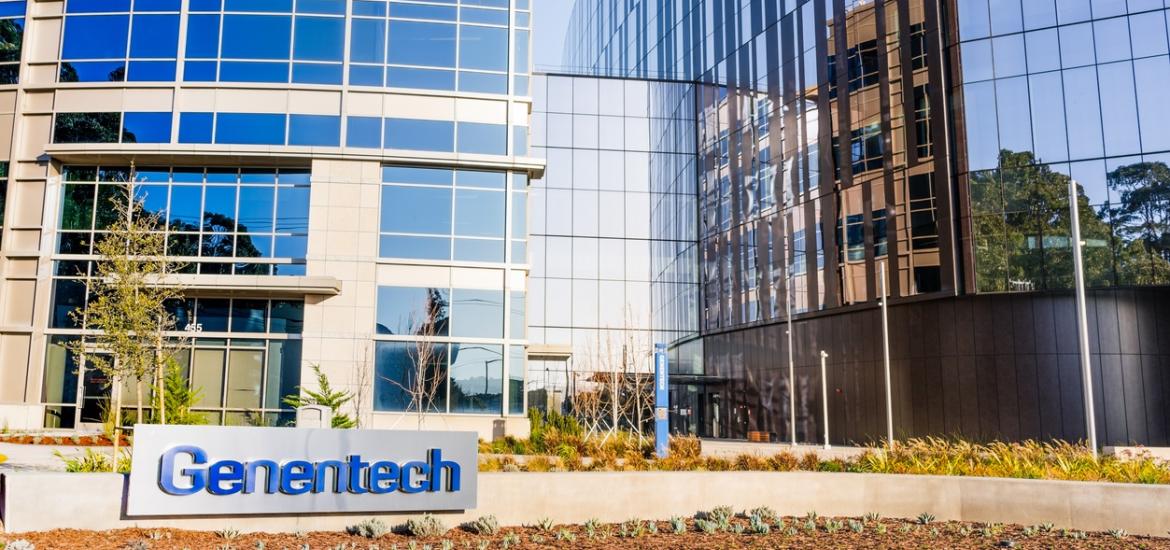
Just how independent is Genentech?
Questions continue to swirl as the unit mulls another oncology makeover.
Questions continue to swirl as the unit mulls another oncology makeover.

While it's not clear precisely how Roche’s Genentech division will look after its latest radical change, its makeover has been a long time coming. Ever since Roche took full control of the business back in 2009 the Swiss company’s claim to run Genentech as an autonomous unit seemed thin, as attested to by several key executive exits.
As such the shock departure reported on Thursday of Ira Mellman, who had served as head of Genentech’s oncology research since 2007, comes as only the latest blow. This move is reportedly the result of a shift that, operationally at least, will see Genentech’s oncology R&D combined into one unit, encompassing immunology and more traditional chemistry.
Such developments are clearly disappointing, and come against the backdrop of prominent clinical setbacks at Roche in general. It’s not clear how the bigger structure will change; so far Roche has operated early R&D under two separate units, the Genentech-originated one dubbed gRED and the Roche one pRED, and these have encompassed other therapy areas in addition to oncology.
Early investment
Notably, six years ago Roche’s then chief executive, Severin Schwan, told analysts that gRED and pRED would only be merged together “over my dead body”. Now Schwan is no longer chief executive, though he remains chairman of Roche’s board of directors.
Questions have been swirling around Genentech for some time. The company was founded in 1976 at the dawn of the biotech revolution, and Roche’s early investment in it looked like a canny move; that entailed the Swiss group buying a Genentech stake of just over 50% in 1990, but beyond this financial arrangement Genentech effectively operated as a separate company.
That changed in 2009, when Roche took full control, acquiring the remaining 44% of its affiliate. Art Levinson, the long-time Genentech chief executive, moved over to become the division’s chairman, but left in 2014. In 2018 Roche and Genentech’s partnering teams were merged, though the Swiss firm insisted that R&D was being kept independent.
The following year Alexander Hardy resigned as chief executive, and more recently Genentech’s flagship biologicals plant in south San Francisco was shut. At Roche too there were executive changes: Dan O’Day left as head of pharma in 2019 to become chief executive of Gilead, but his replacement, Bill Anderson, only lasted four years before departing, later emerging as head of Bayer.
At present Genentech’s gRED is headed by Aviv Regev, who has served in this role since 2020. Mellman was hired to head up Genentech oncology in 2007 – before Roche took full control – and later set up a specific team to run cancer immunology R&D. This latter team is now being dissolved, and it’s this, a move presumably orchestrated by Roche, that seems to have prompted Mellman’s departure, according to a story broken by Endpoints News.
No gRED/pRED merger... yet
For now, therefore, the changes are specific to gRED – which continues to develop small molecules in addition to MAbs, proteins and cell therapies – rather than to the entire Roche group. The latter of course has its own immuno-oncology R&D.
A result of Roche running two such R&D organisations is the parallel development of projects with the same mechanisms of action, so one thing to look for in future will be whether such duplication continues.
One example is the group’s pursuit of two since discontinued Alzheimer’s disease projects, and another is the more successful development of anti-CD20 T-cell engagers. Here pRED gave rise to Columvi, and gRED to Lunsumio; the former is now approved for diffuse large B-cell lymphoma, while the latter was separately developed for follicular lymphoma.
The gRED R&D hub was also behind Tecentriq and Polivy, though beyond the latter molecule it hadn’t made as big a push into ADC development as the likes of AstraZeneca and Merck & Co.
And perhaps gRED’s biggest question mark hangs over TIGIT, and the decision to launch a massive pivotal tiragolumab programme on the back of relatively little data. At a 2020 investor event on gRED Mellman talked up cancer immunology, devoting the majority of his talk to TIGIT, but despite some glimmers of hope the investment in this mechanism has failed to generate a return.
Current early R&D at pRED and gRED
| Project | Mechanism | Status |
|---|---|---|
| pRED (Roche unit) | ||
| RO7122290 | FAP/ 4-1BBL-targeting fusion protein | Ph2 Talios trial in oesophageal squamous cell cancer |
| Tobemstomig | Anti-PD1 x LAG3 MAb | Ph2 in various cancers |
| Forimtamig | Anti-GPRC5D T-cell engager | Ph1/2 in multiple myeloma |
| Englumafusp alfa | Anti-CD19/ 4-1BB antibody fusion protein | Ph1 in non-Hodgkin’s lymphoma |
| Eciskafusp alfa | Anti-PD1-IL2v fusion protein | Ph1 in solid tumours |
| RO7276389 | BRAF inhibitor | Ph1 in solid tumours |
| RO7616789 | Anti-DLL3 x 4-1BB T-cell engager | Ph1 in SCLC |
| RO7589831 | Covalent WRN inhibitor | Ph1 in solid tumours |
| RG6614 | USP1 inhibitor | Ph1 in solid tumours, licensed from KSQ |
| gRED (Genentech unit) | ||
| Autogene cevumeran | Individualised neoantigen specific therapy | Ph2 in melanoma & PDAC, BioNTech deal |
| Cevostamab | Anti FcRH5 T-cell engager | Ph1/2 in multiple myeloma |
| Efbalropendekin alfa | Fc-fusion IL15/IL15Rα protein | Ph1 in various tumours |
| Runimotamab | Anti-HER2 T-cell engager | Ph1 in HER2-expressing tumours |
| RO7502175 | Anti-CCR8 MAb | Ph1 in solid tumours |
| RO7656594 | AR degrader | Ph1 in prostate cancer |
| RO7496353 | Anti-latent TGF-β1 MAb | Ph1 in solid tumours |
| RO7566802 | Undisclosed | Ph1 in solid tumours |
Source: Roche & OncologyPipeline.
This story has been updated.
3749













